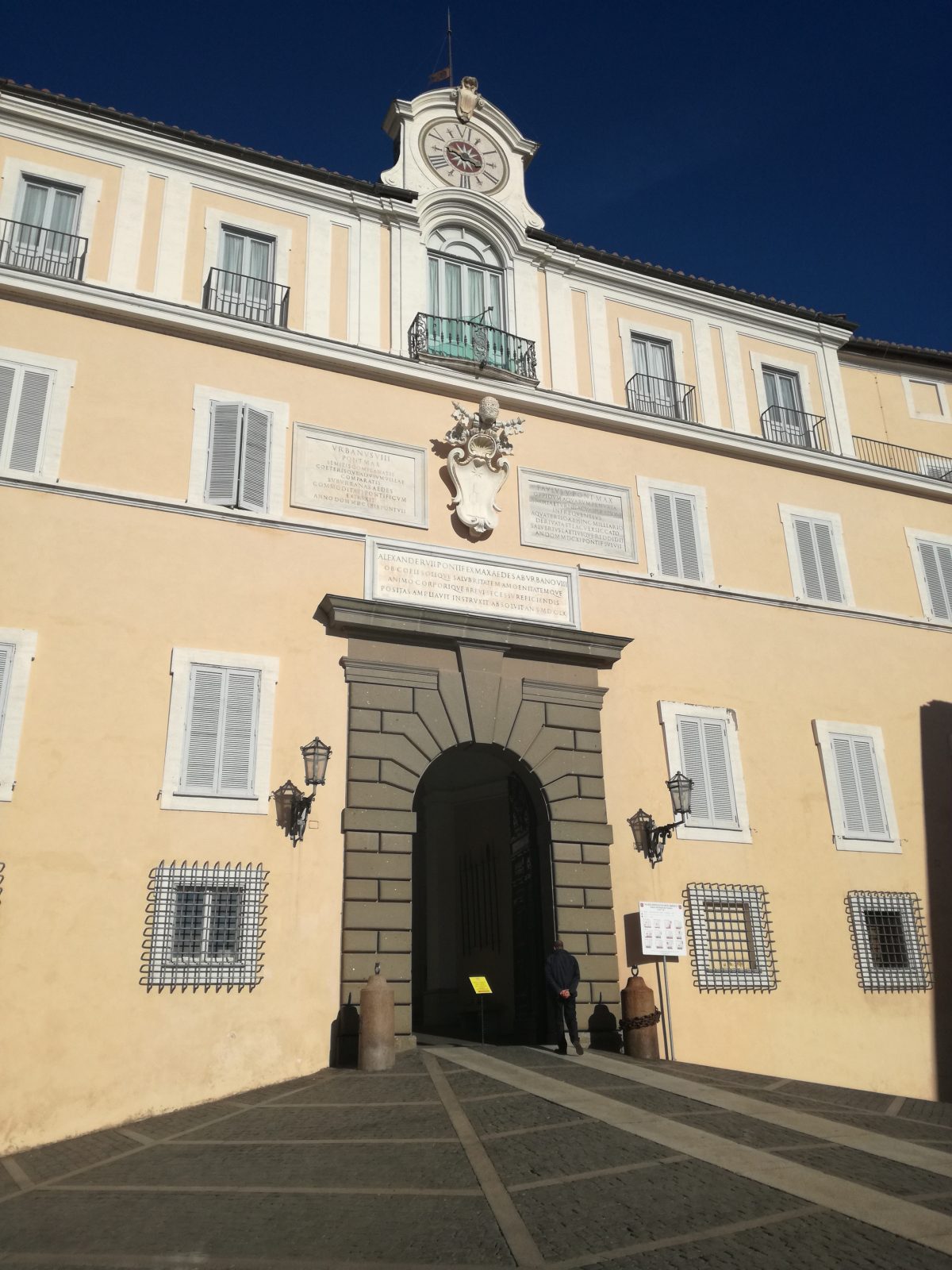Inside the Chapel of Urbano VIII and in other adjacent spaces, you can see frescoes by Simone Lagi and by the Zuccari brothers, while in the Galleria del Bernini you can see frescoes by Pier Leone Ghezzi. We mention also the Sala da Pranzo di Clemente XIV (Dining Room of Clement XIV), the Sala del Trono (Throne room) decorated with tapestries and the Sala dello Scalco (room of the Pope’s personal butler) with paintings by Salvator Rosa.
The Papal residence was abandoned in 1870 due to the fall of the Papal states, until 1929 when, after the Lateran Treaty, it became once again the summer residence of the Popes.
The Papal Palace together with Villa Cybo and Villa Barberini represent a complex of Pontifical Villas of the Holy See that benefit from the extraterritorial status. The gardens belonging to these residences form the Parco delle Ville Pontificie (Park of the Pontifical Villas); inside this splendid and well maintained green area you can find the Specola Vaticana (an astronomical observatory), the relics of the Roman Emperor Domitian of which only a well conserved cryptoporticus is left, the ruins of a theatre and several exedras (semi circular recesses), as well as a small stretch of road covered by the original paving.


 Visit Castelli Romani
Visit Castelli Romani 

